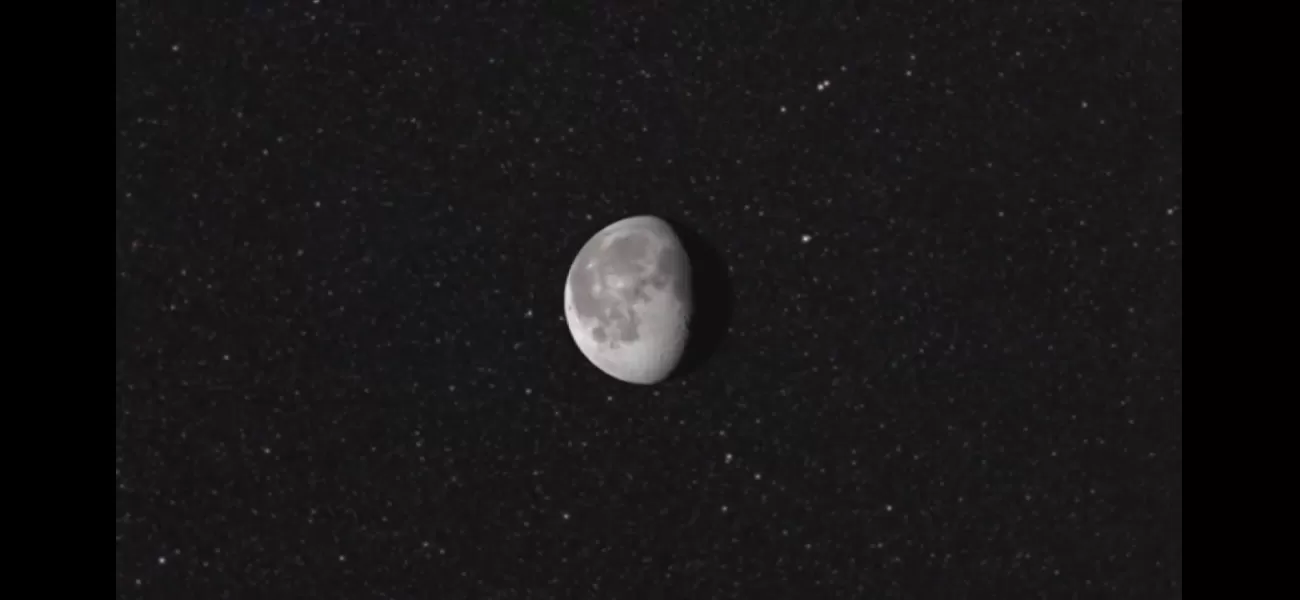Scientists aim to protect Earth's species by cryogenically storing them on the moon.
Scientists want to protect Earth's species by storing them in a cryogenic biorepository on the moon.
August 6th 2024.

A team of scientists has come up with an ambitious plan to protect Earth's precious species in the event of a catastrophic disaster. This plan involves creating a cryogenic biorepository on the moon, utilizing the moon's natural resources to preserve biological material without the need for electricity or liquid nitrogen. The research, led by a group of scientists from the Smithsonian, was recently published in the journal BioScience.
The inspiration for this idea comes from the successful cryopreservation of skin samples from a fish. This method has been proven to work and the team believes it can be applied to other species as well. Mary Hagedorn, a research cryobiologist from the Smithsonian's National Zoo and Conservation Biology Institute, and lead author of the paper, explains the ultimate goal of the lunar biorepository: "Initially, we aim to preserve the most vulnerable species on Earth, but our ultimate goal is to cryopreserve a vast majority of Earth's species."
Hagedorn hopes that by sharing this vision, more partners will join in to expand the conversation, identify potential threats and opportunities, and conduct further research and testing to bring this biorepository to life. The concept of a lunar biorepository is inspired by the Global Seed Vault in Svalbard, Norway, which stores over a million seed varieties to safeguard crop diversity. However, the vault itself faced a threat in 2017 when meltwater from thawing permafrost flooded the facility, emphasizing the dangers of climate change.
The team explains that the reason for choosing the moon as the location for the biorepository is due to the unique conditions at the lunar poles. These regions have craters that are in permanent shadow, with temperatures dropping as low as -410 degrees Fahrenheit. This makes it a perfect location for passive cryopreservation, which is not possible on Earth. Additionally, the team proposes storing the samples underground or inside a structure made from lunar rocks to protect them from harmful radiation.
Further research is needed to fully understand the effects of radiation exposure and microgravity on cryopreserved samples. Hagedorn clarifies that the purpose of this biorepository is not to replace Earth's biodiversity in case of its destruction, but rather to serve as a backup plan in case of natural disasters or to support space exploration. She emphasizes the importance of preserving life, which is rare and precious in the universe.
However, not everyone is convinced that this is a feasible solution. Rob Brooker, head of ecological sciences at the James Hutton Institute in Scotland, voices concerns about the cost and effort involved in establishing such a resource on the moon. He believes that the focus should be on ongoing conservation efforts and protecting nature on Earth. Sally Keith, a senior lecturer in Marine Biology at Lancaster University, also raises concerns about the urgency of minimizing biodiversity loss and the potential cost of launching a rocket to the moon instead of using those resources to conserve forests, coral reefs, and freshwater lakes.
In conclusion, the idea of a lunar biorepository is an intriguing one, but it also raises valid concerns. More research and discussion are needed to determine its feasibility and potential impact on Earth's biodiversity. Regardless, it serves as a reminder of the importance of preserving the precious and rare forms of life that exist on our planet.
The inspiration for this idea comes from the successful cryopreservation of skin samples from a fish. This method has been proven to work and the team believes it can be applied to other species as well. Mary Hagedorn, a research cryobiologist from the Smithsonian's National Zoo and Conservation Biology Institute, and lead author of the paper, explains the ultimate goal of the lunar biorepository: "Initially, we aim to preserve the most vulnerable species on Earth, but our ultimate goal is to cryopreserve a vast majority of Earth's species."
Hagedorn hopes that by sharing this vision, more partners will join in to expand the conversation, identify potential threats and opportunities, and conduct further research and testing to bring this biorepository to life. The concept of a lunar biorepository is inspired by the Global Seed Vault in Svalbard, Norway, which stores over a million seed varieties to safeguard crop diversity. However, the vault itself faced a threat in 2017 when meltwater from thawing permafrost flooded the facility, emphasizing the dangers of climate change.
The team explains that the reason for choosing the moon as the location for the biorepository is due to the unique conditions at the lunar poles. These regions have craters that are in permanent shadow, with temperatures dropping as low as -410 degrees Fahrenheit. This makes it a perfect location for passive cryopreservation, which is not possible on Earth. Additionally, the team proposes storing the samples underground or inside a structure made from lunar rocks to protect them from harmful radiation.
Further research is needed to fully understand the effects of radiation exposure and microgravity on cryopreserved samples. Hagedorn clarifies that the purpose of this biorepository is not to replace Earth's biodiversity in case of its destruction, but rather to serve as a backup plan in case of natural disasters or to support space exploration. She emphasizes the importance of preserving life, which is rare and precious in the universe.
However, not everyone is convinced that this is a feasible solution. Rob Brooker, head of ecological sciences at the James Hutton Institute in Scotland, voices concerns about the cost and effort involved in establishing such a resource on the moon. He believes that the focus should be on ongoing conservation efforts and protecting nature on Earth. Sally Keith, a senior lecturer in Marine Biology at Lancaster University, also raises concerns about the urgency of minimizing biodiversity loss and the potential cost of launching a rocket to the moon instead of using those resources to conserve forests, coral reefs, and freshwater lakes.
In conclusion, the idea of a lunar biorepository is an intriguing one, but it also raises valid concerns. More research and discussion are needed to determine its feasibility and potential impact on Earth's biodiversity. Regardless, it serves as a reminder of the importance of preserving the precious and rare forms of life that exist on our planet.
[This article has been trending online recently and has been generated with AI. Your feed is customized.]
[Generative AI is experimental.]
0
0
Submit Comment





